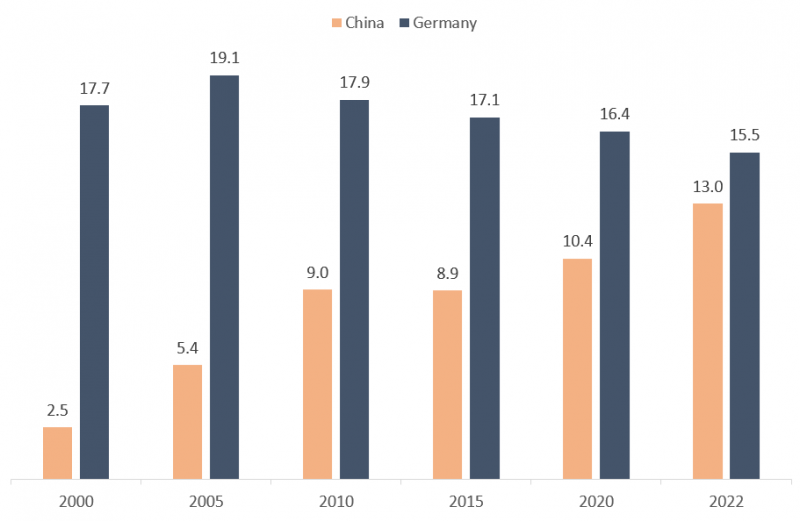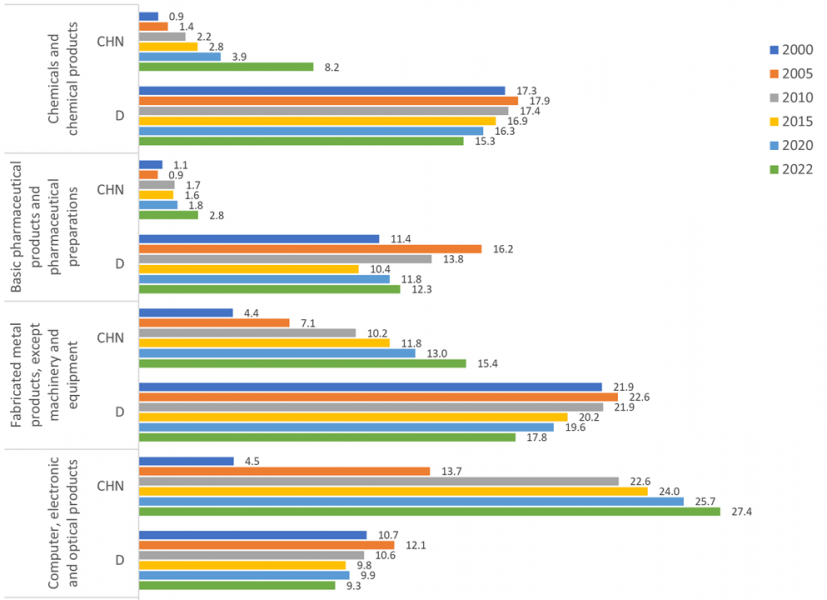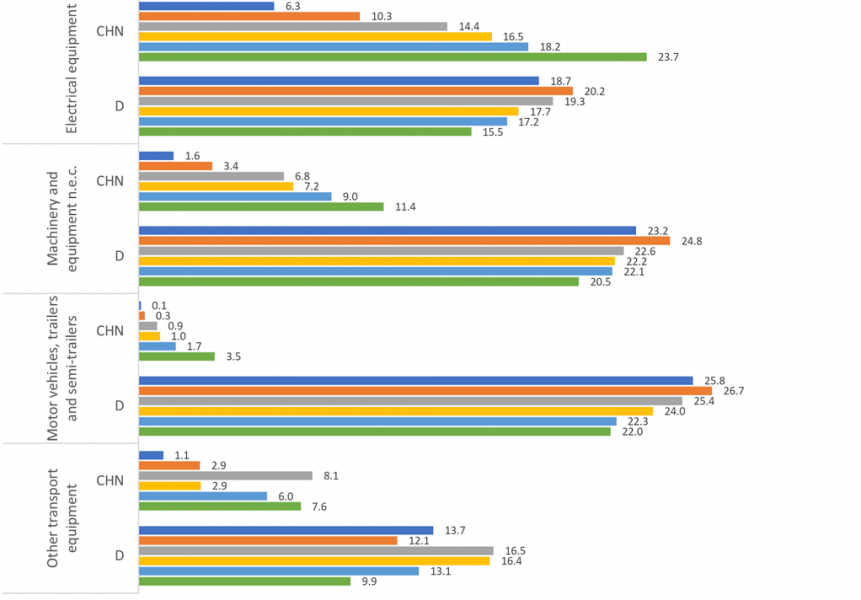References
Chimits, François, 2023, What Do We Know About Chinese Industrial Subsidies?, CEPII Policy Brief No. 2023- 42, Paris What Do We Know About Chinese Industrial Subsidies? (cepii.fr) [4.8.2023]
Eurostat, 2023, CPA 2008 – Statistical Classification of Products by Activity, CPA 2008 – CPA – Eurostat (europa.eu) [16.7.2023]
Matthes, Jürgen, 2020a, China’s Market Distortions and the Impact of the Covid-19 Crisis, in: CESifo Forum, Nr. 3, S. 42–48, München, https://www.cesifo.org/DocDL/CESifo-Forum-2020-3-matthes-china%E2%80%99s%20market%20distortion-september.pdf [4.8.2023]
Matthes, Jürgen, 2020b, Technologietransfer durch Unternehmensübernahmen chinesischer Investoren, in: Wirtschaftsdienst, 100. Jg., Nr. 8, S. 633–639, https://www.wirtschaftsdienst.eu/inhalt/jahr/2020/heft/8/beitrag/technologietransfer-durch-unternehmens-uebernahmen-chinesischer-investoren.html [4.8.2023]
Matthes, Jürgen, 2021b, Konkurrenzdruck durch China auf dem EU-Markt. Ein tiefer Blick in Außenhandelsstatistik und Industriebranchen, IW-Report, Nr. 30, Köln, Konkurrenzdruck durch China auf dem EU-Markt: Ein tiefer Blick in Außenhandelsstatistik und Industriebranchen – Institut der deutschen Wirtschaft (IW) (iwkoeln.de) [4.8.2023]
Matthes, Jürgen, 2021a, Wettbewerbsverzerrungen durch China – Akademische Evidenz und Ergebnisse einer Befragung deutscher Unternehmen, IW-Report, Nr. 10, Köln https://www.iwkoeln.de/fileadmin/user_upload/Studien/Report/PDF/2021/IW-Report-2021_Wettbewerbsverzerrungen-China.pdf [4.8.2023]
Matthes, Jürgen, 2023a, Entwicklung des Konkurrenzdrucks durch China auf dem EU-Markt, IW-Report, Nr. 39, Köln https://www.iwkoeln.de/fileadmin/user_upload/Studien/Report/PDF/2023/IW-Report_2023-China-Konkurrenz-in-EU.pdf
Matthes, Jürgen, 2023b, Wie ist der starke Importanstieg aus China im Jahr 2022 zu erklären und wie haben sich die Import-Abhängigkeiten entwickelt?, IW-Report, Nr. 34, Köln https://www.iwkoeln.de/studien/juergen-matthes-wie-ist-der-starke-importanstieg-aus-china-im-jahr-2022-zu-erklaeren-und-wie-haben-sich-die-import-abhaengigkeiten-entwickelt.html [4.8.2023]
OECD – Organisation for Economic Co-operation and Development, 2023, Government support in industrial sectors, A synthesis report, OECD Trade Policy Paper, Nr. 270, Paris, https://www.oecd-ilibrary.org/docserver/1d28d299-en.pdf?expires=1691133139&id=id&accname=guest&checksum= D1CC3904170A08EEAB34D134708D16D0 [4.8.2023]
Zenglein, Max J. / Holzmann, Anna, 2019, Evolving made in China 2025. China’s industrial policy in the quest for global tech leadership, Merics Papers on China, Nr. 8, Berlin






